Throughout history, Spain and the Balearic Islands have been both crisscrossed and settled by different waves of invaders, many of whom have left their mark.
While not all of these cultures were necessarily friendly, their contribution to Spain’s landmarks, including its magnificent castles, palaces, ancient roads, towers, walled cities, and grand amphitheaters, is invaluable.
Here are 12 landmarks in Spain you won’t want to miss.
La Sagrada Famíla, Barcelona
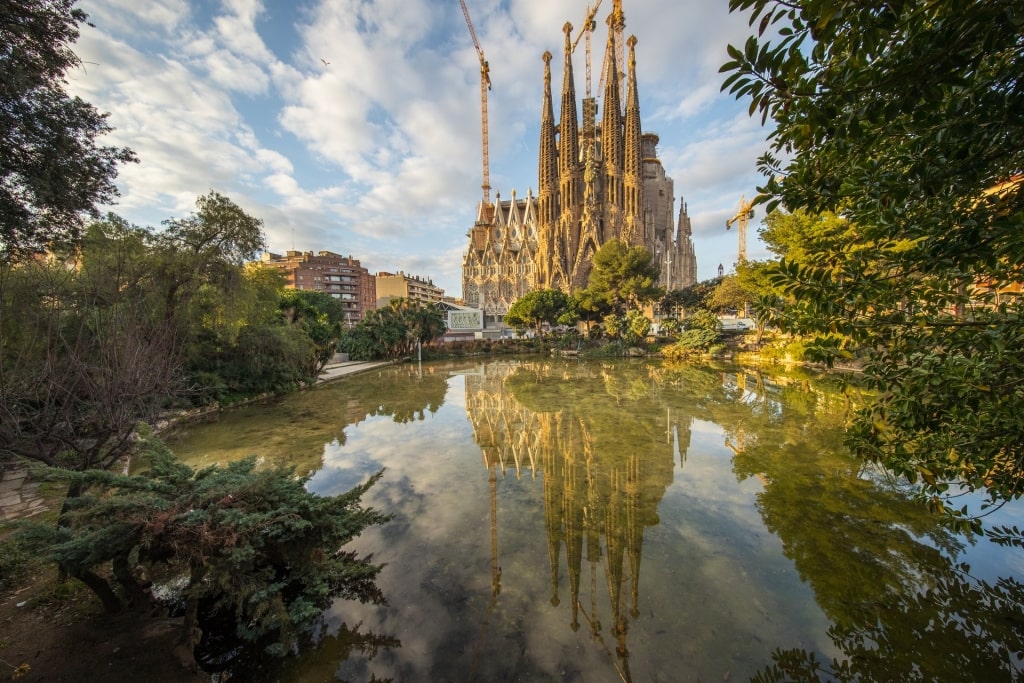
La Sagrada Famíla, Barcelona
La Sagrada Familia is the most distinguishable landmark in Barcelona. Its slender spires tower over the neat grid of the Eixample district, a wealthy neighborhood that was created when the city began to overspill its crowded Gothic quarter.
The church, the legacy of the great modernista architect Antoni Gaudí, has been under construction for 138 years and is still far from finished. But it’s still highly-regarded as one of the most beautiful places in Spain, inside and out. The design mimics the organic forms of nature, and the facades are inspired by Montserrat, a mountain and pilgrimage site outside the city.
Inside, you’ll gaze up through what feels like an enchanted forest of skinny columns, the floor bathed in light that filters through elaborate stained glass windows. Exploring the interior is one of the best things to do in Barcelona with kids.
This is one Spanish landmark for which you’ll need to book ahead; it pays to skip the line, especially in the heat of summer. If you can, add on a ticket to zoom to the top of one of the towers in the elevator for one of the best views in Barcelona, the Mediterranean sparkling in the distance.
Gibralfaro Castle, Malaga
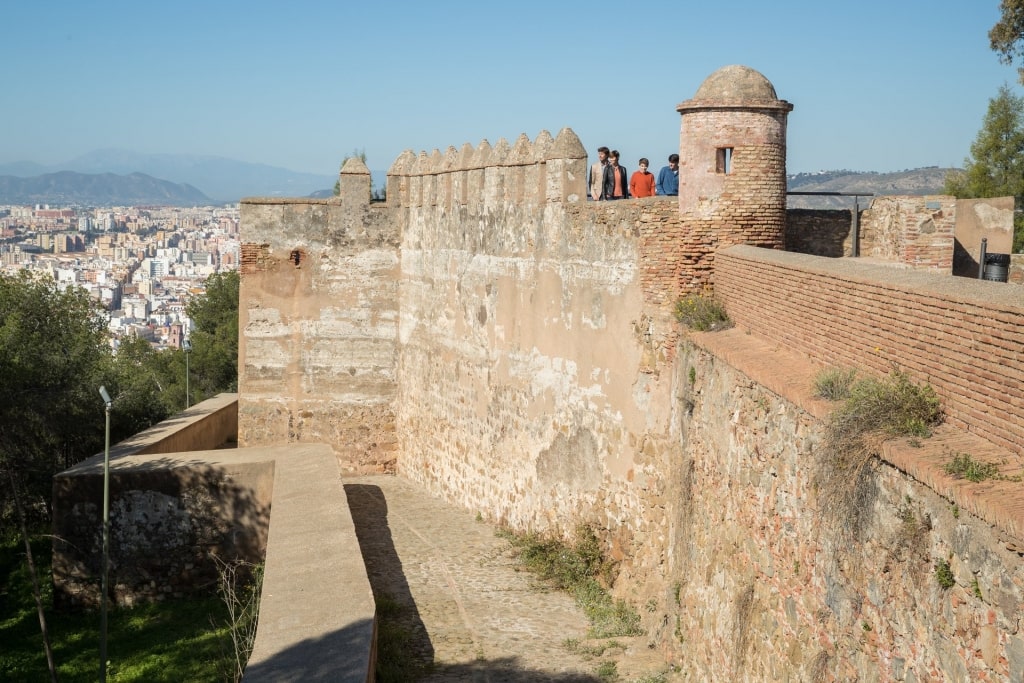
Gibralfaro Castle, Malaga
The sturdy Gibralfaro castle, built by the Moors between the 10th and the 14th centuries, looms over the old fortified center in Malaga, called the Alcazaba, with commanding views down over the port.
At one point, Gibralfaro, which served as a military barracks, was considered the most impenetrable castle of the whole of Iberia, thanks to its double walls and solid towers. It fell to the Catholics after a siege in 1487 as the Moors were driven out of Andalucia.
You can walk up the Spanish castle via a footpath that starts near the town hall, the route shaded in part by pines, eucalyptus, and tropical gardens. At the top, you can explore the walls and parapets of the castle, which is named after an early lighthouse, Jebel Al Faro, or “Rock of the Lighthouse”.
Read: What Is Spain Known for?
Alhambra Palace, Granada
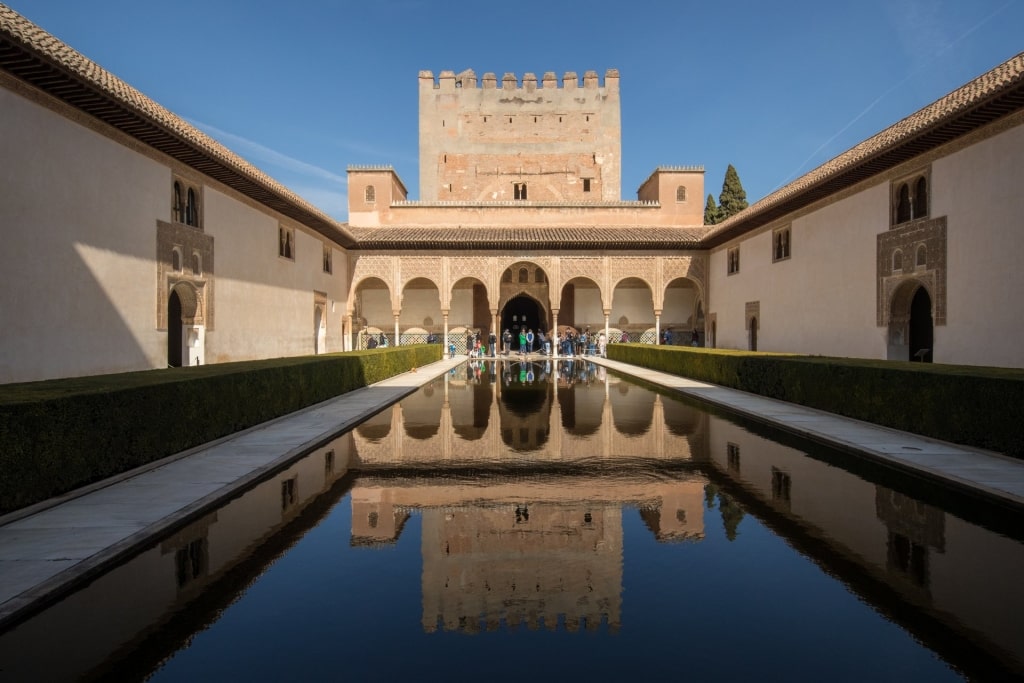
Alhambra Palace, Granada
Arguably the most exquisite structure of Andalucia’s Moorish legacy is the Alhambra, just outside Granada, inland from Malaga. One of the most famous landmarks in Spain, the complex was built between the ninth and 15th centuries.
The name means “red fort,” and if you visit in the soft light of morning or early evening, the whole palace glows pinky red, the snowcapped mountains of the Sierra Nevada as a backdrop. At its height, the palace complex contained souks, or markets, a Turkish bath, three palaces, and running water.
A tour takes several hours, and it’s captivating. Every wall in the Casa Real, the main palace, is decorated with intricate mosaics that reflect the sunlight in dazzling colors. The elaborate ceilings are carved from Lebanese cedar.
Leave time on your visit for the Generalife, which once served as a kitchen garden for the palace, growing orange and almond trees, as well as figs and pomegranates. Later, it became a place of leisure for the rulers of Granada. To this day, it is an exquisite ornamental garden of dazzling patios and reflecting pools.
Guggenheim Museum, Bilbao
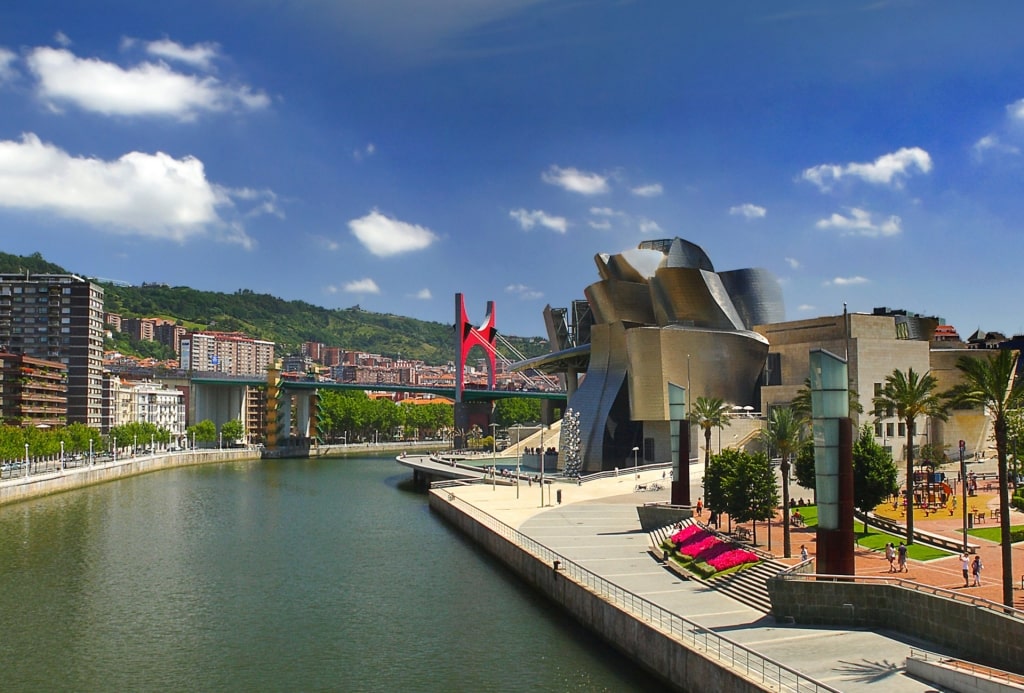
Guggenheim Museum, Bilbao
Incongruous yet iconic, Frank Gehry’s dazzling, shimmering masterpiece, its exteriors clad in titanium tiles that mimic gleaming fish scales, is a landmark of contemporary Spain. The prows of ships, craggy cliffs, and leaning towers are just some of the features you can pick out in this extraordinary jumble of buildings.
The museum lights up the center of Bilbao, a city that was in the doldrums until Gehry’s creativity was unleashed. In some ways, the building itself overshadows its contents, but if you go inside, expect changing displays of contemporary art alongside the permanent collection, which includes several installations. If you’re not keen on creepy crawlies, look away as you approach Louise Bourgeois’ Maman, a bronze spider nearly 30 feet tall.
City of Arts and Sciences, Valencia
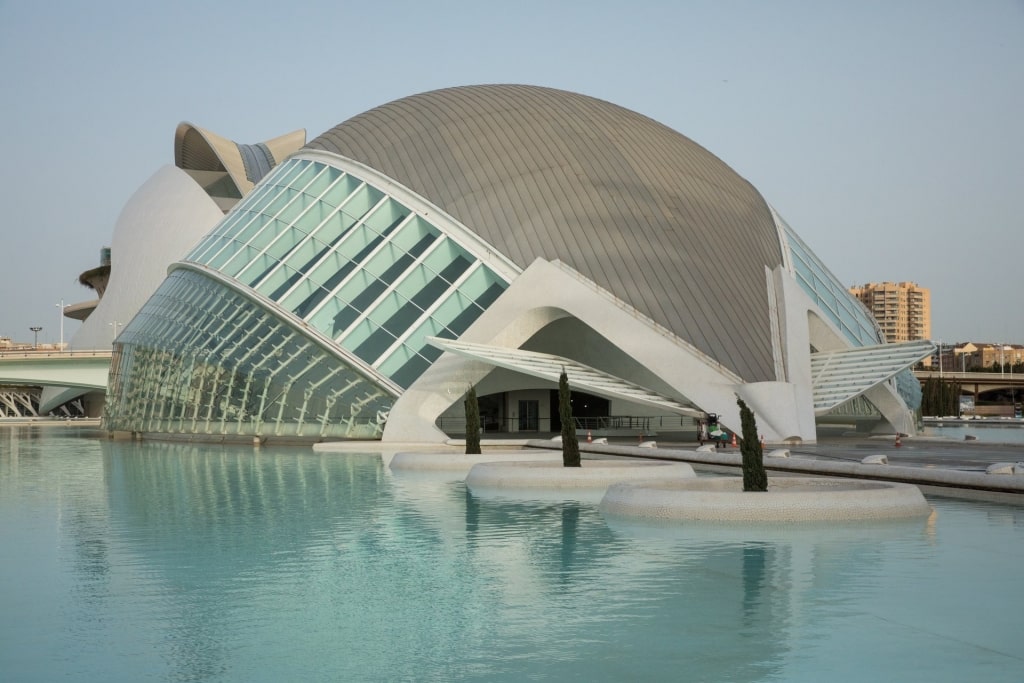
City of Arts and Sciences, Valencia
The unpredictable Turia River that once flowed through the center of Valencia turned out to be a blessing in disguise. The waterway had to be diverted around the city following a particularly bad flood in 1957, and its former bed has now been converted into a wonderful park.
This four-mile ribbon snakes through the center, blending ornate formal gardens with lawns, sports fields, and palm-lined avenues, with the old bridges still intact. One end of the park is overlooked by the dramatically curvy, shining glass and metal complex of the avant-garde City of Arts and Sciences, incorporating the opera house, aquarium, science museum, and an IMAX cinema.
The buildings were designed by renowned architects Santiago Calatrava and Félix Candela and are worth visiting for the sheer beauty of their form, even if you don’t go inside. Some visitors like to hire bicycles and cycle along the old river bed, just admiring the scenery.
Having said that, the Príncipe Felipe Science Museum is a great science center, especially if you’re visiting Europe with kids, while the Oceanogràfic is Europe’s largest aquarium with over 500 marine species.
Roman Theater, Cartagena
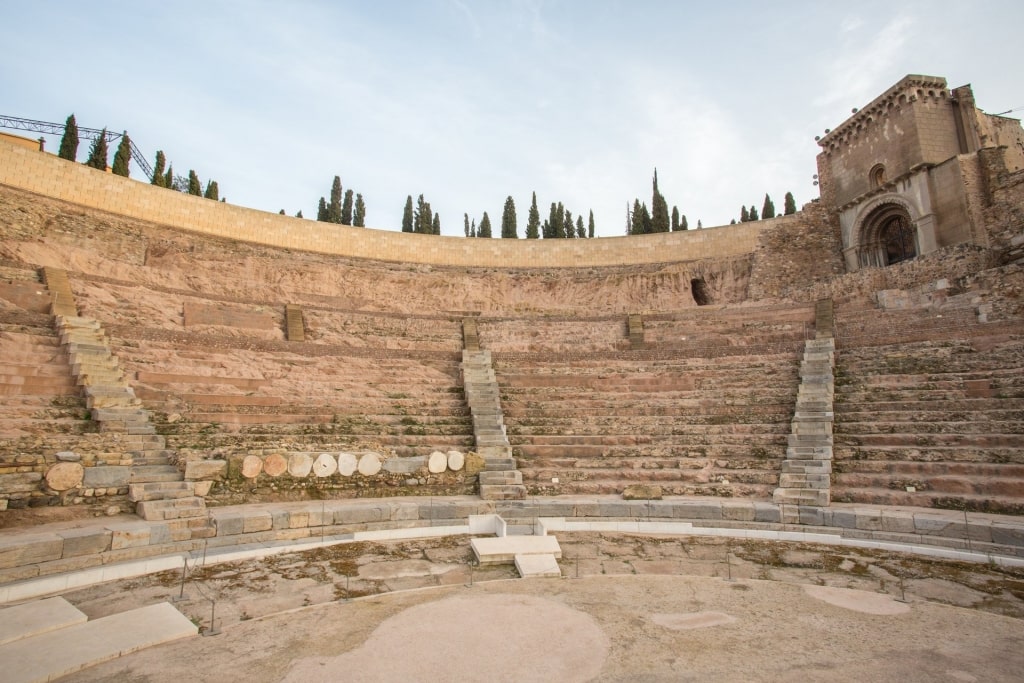
Roman Theater, Cartagena
Simply strolling around the lovely old city of Cartagena, trying mentally to peel back the layers of history all around you, is enough for many. But if you visit any one attraction, head for the Roman Theater Museum, just in front of the port.
This impressive amphitheater was built between the fifth and first centuries BC, and at its height, held some 6,000 spectators. Over the centuries, it fell into disrepair, one building after another being built on top of the ruins, including a marketplace and a bullring. Excavations only began in 1988, a mammoth task, as the ancient theater was completely covered by the city.
The visit starts in a small museum, displaying statues, columns, and earthenware discovered during the excavation. What’s interesting is that you enter the museum on the Town Hall Square and walk through an underground corridor, under existing buildings, emerging into the sunlight within the amphitheater itself, now beautifully restored.
Dalt Vila, Ibiza
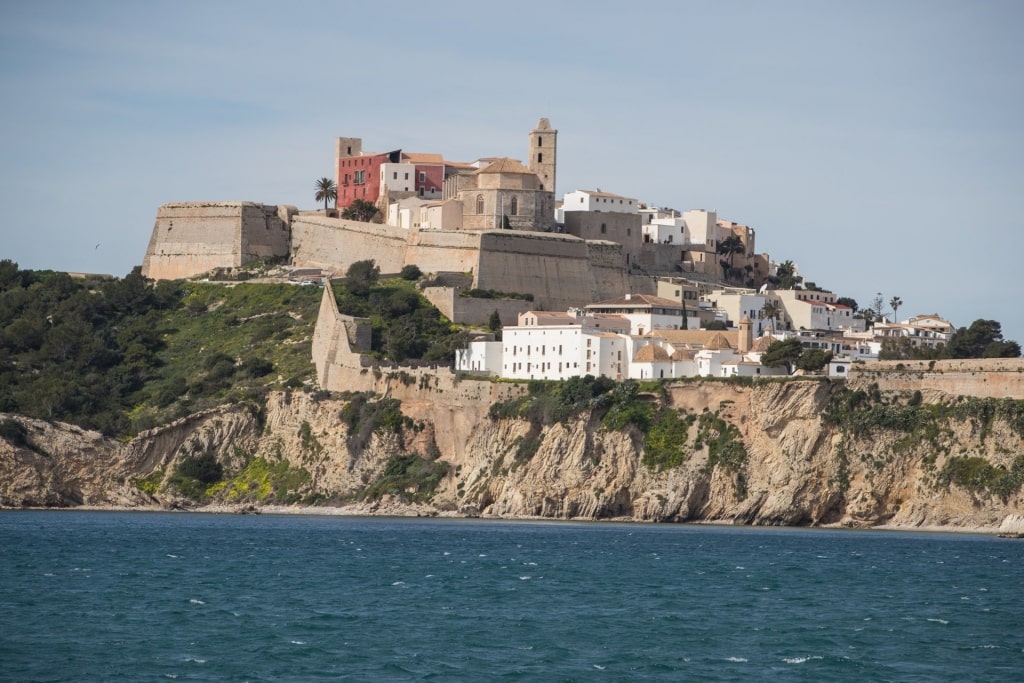
Dalt Vila, Ibiza
The fortified medieval heart of Ibiza Town, Dalt Vila, which means “high town”, perches on a small hill overlooking the port. As a whole, it’s one of the most enchanting of Spain’s landmarks.
The whole area within the 16th-century ramparts in Ibiza is a UNESCO World Heritage Site, and it’s a blissful place to lose yourself. Enter through the Port Nou gate in the walls and you’re in another world of ancient cobbled alleys, medieval mansions, and sunlit balconies.
All roads lead uphill to the cathedral at the top, where you can gaze over the battlements and take in wonderful views of the port below and across the sparkling Mediterranean to the island of Formentera.
The superb archaeological museum is currently closed for renovations, but there are other compensations in Dalt Vila, not least quirky shops, galleries, and numerous restaurants with outdoor dining on leafy patios.
La Seu, Barcelona
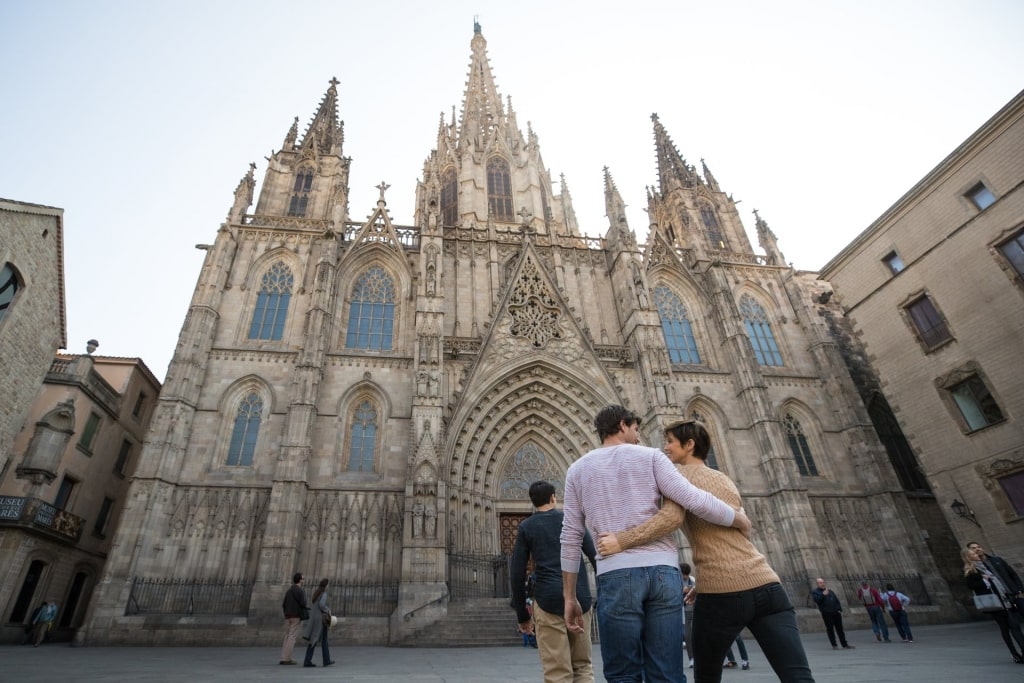
La Seu, Barcelona
Barcelona’s vast Gothic cathedral is sometimes overshadowed by the flashier Sagrada Familia but is nonetheless one of the city’s great monuments. It looms over the tangle of streets inside the old city walls that form the Gothic quarter.
La Seu took 600 years to complete and is dedicated to Santa Eularia, a 13-year old shepherdess who was martyred in 304 AD by the Romans for her Christian beliefs. She’s buried in a crypt below the altar. Today, 13 pure white geese, symbolizing her age and purity, inhabit the leafy cloister, a beautiful green oasis of palms and magnolias in the heart of the complex.
After your visit, head for Carrer Petritxol, a narrow lane famed for its chocolate shops, for churros, a famous Barcelona food made of fried strips of doughnut dipped in rich chocolate.
Catedral de Valencia, Valencia
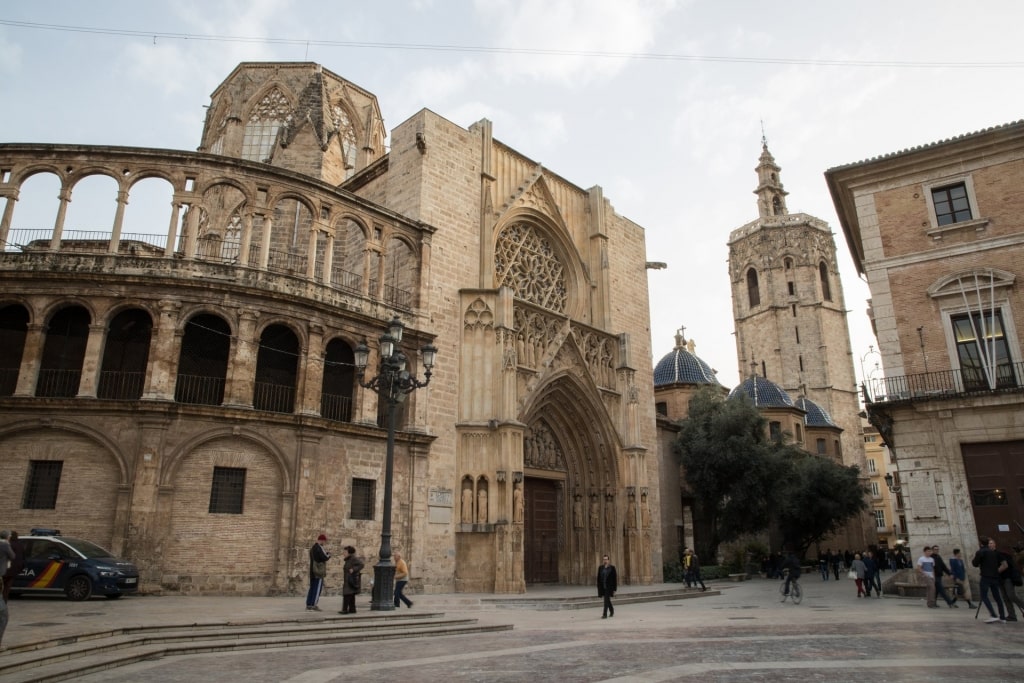
Catedral de Valencia, Valencia
The mighty Catedral de Valencia is a case in point when it comes to illustrating Spain’s colorful past. First, there was a Roman temple on this site, and later, a mosque. Construction on the current Gothic structure began in the 13th century.
What’s intriguing about the mighty cathedral in Valencia’s Old Town is that it houses what many believe to be the actual Holy Grail. On busy days, a line of pilgrims snakes around the Capella del Santo Calíz, within the ornate interior, to pay homage to the Grail, a cup carved from oriental agate stone and encrusted with jewels.
This aside, the cathedral’s interiors are magnificent, a lavish mélange of gothic, Romanesque, and baroque styles, angels painted in a starry sky overlooking the altar. The cathedral is located in the heart of this very walkable city, with shops and restaurants all around.
Tuck into an authentic paella, which originates in Valencia, to summon the energy for the climb up 207 steps of the cathedral’s Miguelete bell tower for panoramic views over the rooftops.
Royal Alcázar, Seville
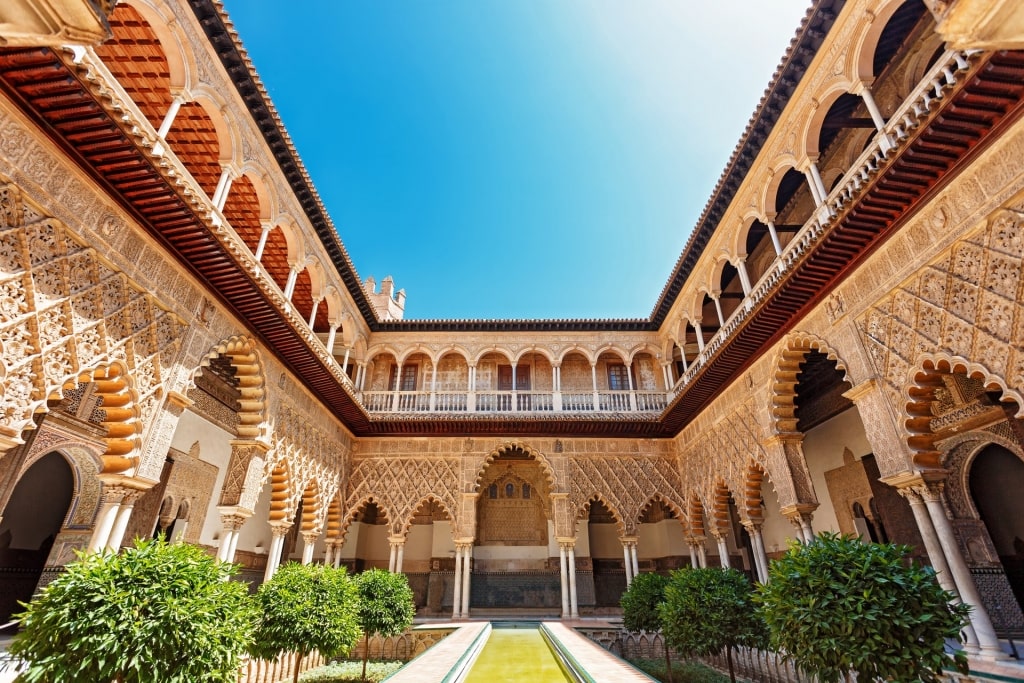
Royal Alcázar, Seville
Seville’s royal palace is a perfect example of Mudéjar architecture, the style adopted by the Moors to blend Arab, Gothic, and Renaissance themes. Originally a fort in the 10th century, the palace has been expanded many times, the most lavish addition the Palacio de Don Pedro, added in the 14th century.
Here, you’ll see sunken gardens, elaborate artworks, intricate mosaics, and grand salons. The Salón de Los Embajadores, with an exquisite red, gold, and green-domed ceiling, is where Queen Isabella received Christopher Columbus. This is one Spain landmark for which you’ll need to plan ahead, as it’s understandably popular, not least because sections of the building are still used by today’s royal family.
While you’re in the city center of glorious Seville, stroll across the road from the Alcázar to the Giralda, a Moorish minaret that’s the symbol of the city. You can climb 308 feet to the top, walking on ramps built by the Moors wide enough to accommodate donkeys, for stupendous views. The tower was once used as an observatory and a platform from which to call the faithful to prayer, but now it’s the bell tower for the city’s cathedral.
La Seu, Palma
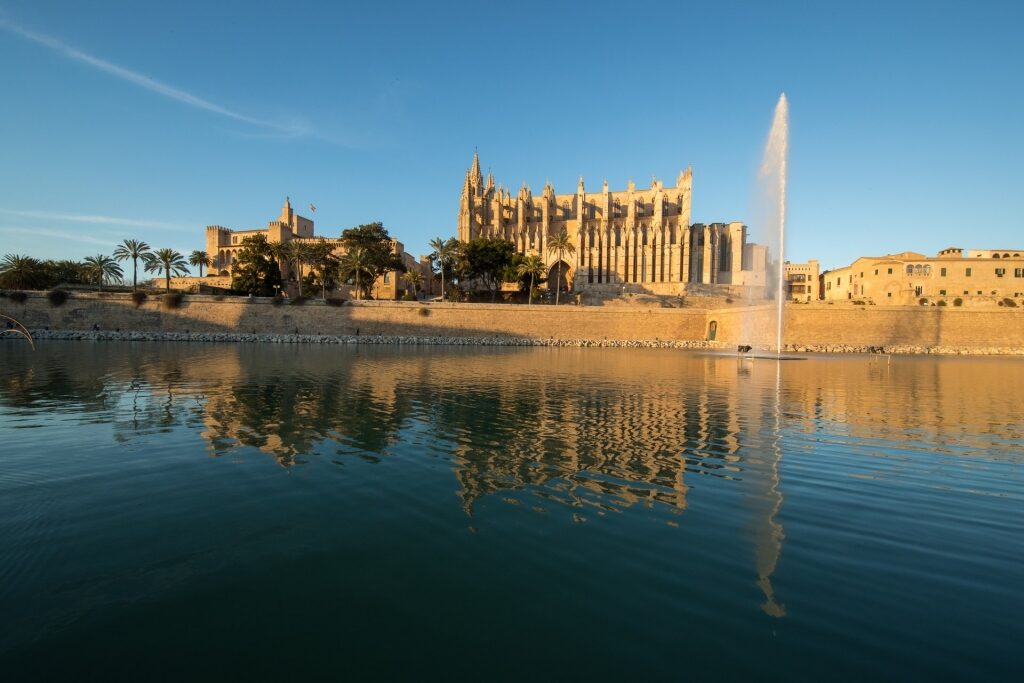
La Seu, Palma
You can’t miss Palma’s magnificent Gothic cathedral, La Seu, as it dominates one end of the curve of Palma Bay. This brooding hulk of a building, one of the tallest Gothic structures in Europe, is characterized by its rib-like flying buttresses and enormous rose window.
The Spanish church was started in the 14th century and received various additions over the years. There’s a touch of Antoni Gaudí inside in the decidedly contemporary crown of thorns that hangs over the altar. This isn’t actually a Gaudí piece, fans will be sorry to learn, but it was completed by one of his disciples.
La Seu lies on the edge of Palma’s intriguing Gothic Quarter, a tangle of alleyways lined with grand old mansions, secret courtyards, and dark little cellar bars that provide shady refuge from the heat and tasty tapas to accompany a lunchtime glass of wine after your visit.
Tower of Hercules, La Coruña
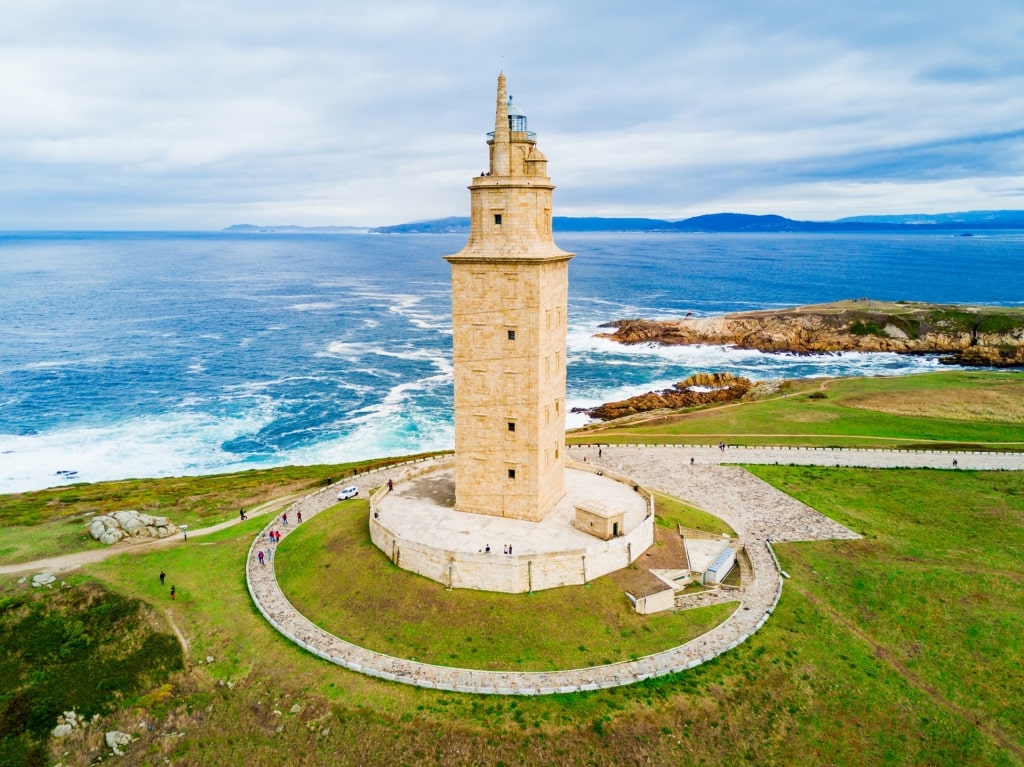
Tower of Hercules, La Coruña
The oldest Roman lighthouse still in use, the majestic Torre de Hércules guards a grassy, wind-blown headland on the northern tip of this bustling port city. There’s been a tower here for some 2,000 years. While the outer walls were added at the end of the 18th century, the inside, up which you can climb 200 steps, is the original Roman structure.
Around the tower, there’s an eclectic range of attractions, from a sculpture garden to Iron Age rock carvings and an ancient Muslim cemetery. Getting here is easy from downtown, and the views from the top of the waves pounding the rocks at the base of the cliff are magnificent.
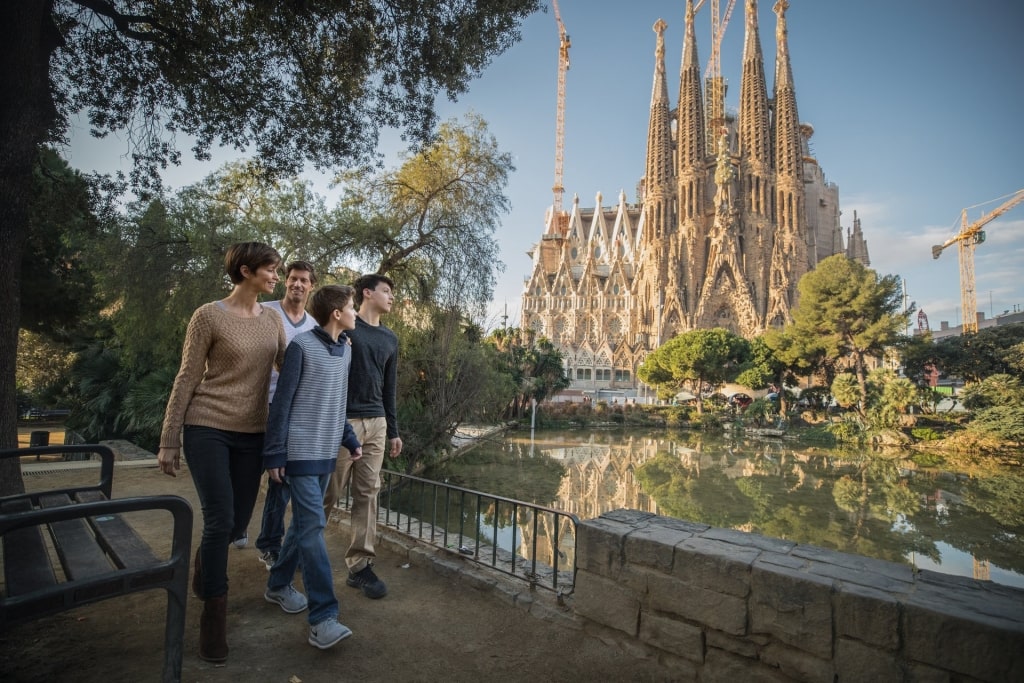
La Sagrada Famíla, Barcelona
Ready to discover Spain’s rich culture for yourself? Start planning your next European cruise now and browse our exciting itineraries to Spain on our website.



